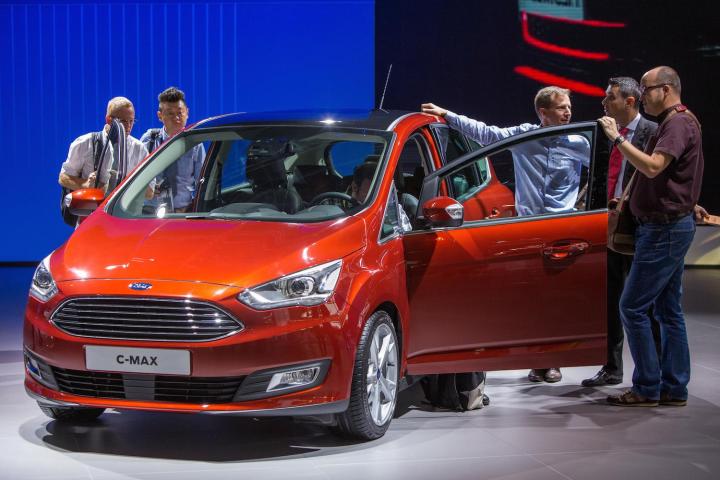
Although the 2013 Ford C-Max was the first one sold in the U.S., the C-Max has a longer history in Europe. Production of the first-generation C-Max began in 2003, and the current, second-gen C-Max arrived as a 2011 model. So while the so-called “multi-activity vehicle” is relatively new to Americans, Europeans may be due for the refreshed C-Max variants – both five-passenger C-Max and seven-passenger Grand C-Max – on display in Paris.
Among the changes are a new front fascia and headlights, updates to interior materials and design and, for European customers, two new engine choices that include a 1.5-liter EcoBoost and a 1.5-liter turbocharged diesel.
The new look up front is cleaner and more modern. Ford’s now-established trapezoidal grille is mounted higher and eliminates some of the visual clutter of the current design. The new lower grille runs the width of the car incorporates rectangular fog lights. The new headlights are more horizontal and complete the front-end makeover.

Inside, the C-Max receives new materials and finishes and loses a few buttons. Ford also included some practical updates like a sliding front armrest and a hands-free rear hatch. Furthermore, Ford says the latest C-Max is quieter thanks to thicker glass and improvements to sound-deadening acoustic materials.
We expect the refreshed Ford C-Max to arrive in the U.S. late next year as a 2016 model.
What we likely will not see here is the totally redesigned seven-passenger S-Max. It made its global reveal at Paris with fresh styling and new technologies like adaptive steering, LED headlights and a pre-collision safety system. The second-generation S-Max also offers all-wheel drive and two new EcoBoost engine choices.
European-spec versions of both the Mustang and Edge make their auto show debuts at Paris, the former with standard performance suspension tuning and the latter with a not-for-U.S. 2.0-liter turbocharged diesel. Also new for Europe is a diesel engine option for the Focus ST that Ford says makes it the most fuel-efficient performance car in its history.
While Ford continues to expand its global product lineup, availability remains limited by geography. If Europe can have its V8-powered Mustang, why can’t we have a C-Max with a diesel and a manual gearbox?


